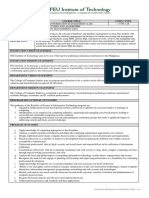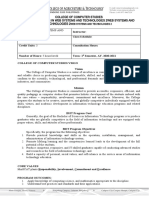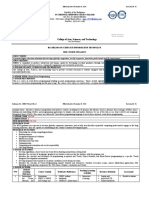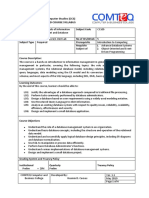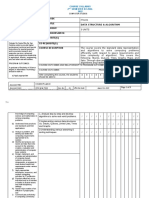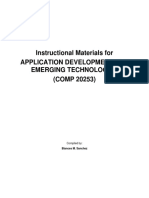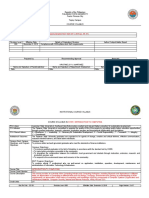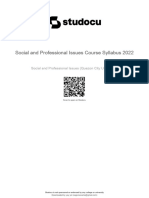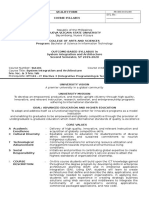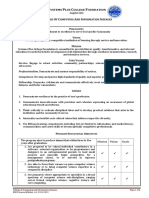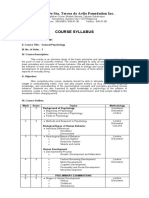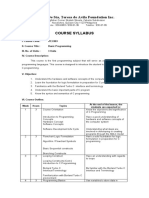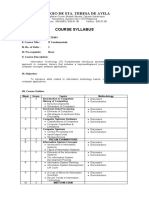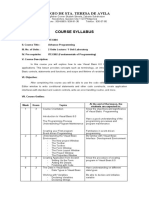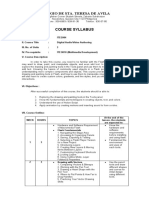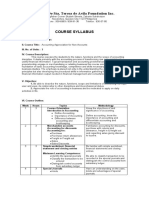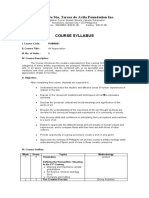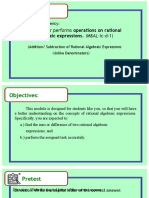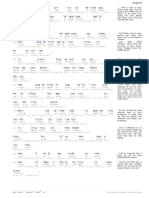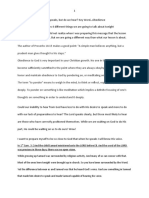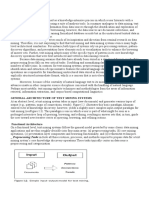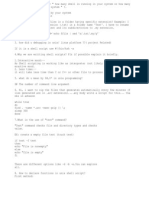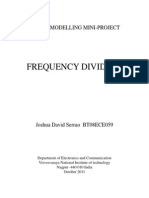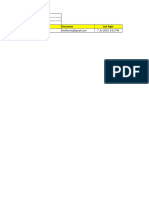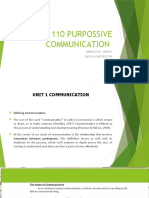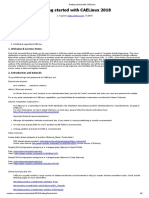0% found this document useful (1 vote)
1K views8 pagesIT 333 Advanced Database Management Systems
This document provides a course syllabus for Advanced Database Management Systems (IT 333) at Bulacan State University College of Information and Communications Technology. The 3-unit course is taught by Ms. Lourdes Mangahas and has no prerequisites. Upon completing the course, students will be able to implement skills in database design, administration, and SQL queries to develop a working prototype system. Student learning will be assessed based on criteria such as the quality of their entity relationship diagram, relational design, queries, and form design.
Uploaded by
Harold LuceroCopyright
© © All Rights Reserved
We take content rights seriously. If you suspect this is your content, claim it here.
Available Formats
Download as DOCX, PDF, TXT or read online on Scribd
0% found this document useful (1 vote)
1K views8 pagesIT 333 Advanced Database Management Systems
This document provides a course syllabus for Advanced Database Management Systems (IT 333) at Bulacan State University College of Information and Communications Technology. The 3-unit course is taught by Ms. Lourdes Mangahas and has no prerequisites. Upon completing the course, students will be able to implement skills in database design, administration, and SQL queries to develop a working prototype system. Student learning will be assessed based on criteria such as the quality of their entity relationship diagram, relational design, queries, and form design.
Uploaded by
Harold LuceroCopyright
© © All Rights Reserved
We take content rights seriously. If you suspect this is your content, claim it here.
Available Formats
Download as DOCX, PDF, TXT or read online on Scribd
/ 8
